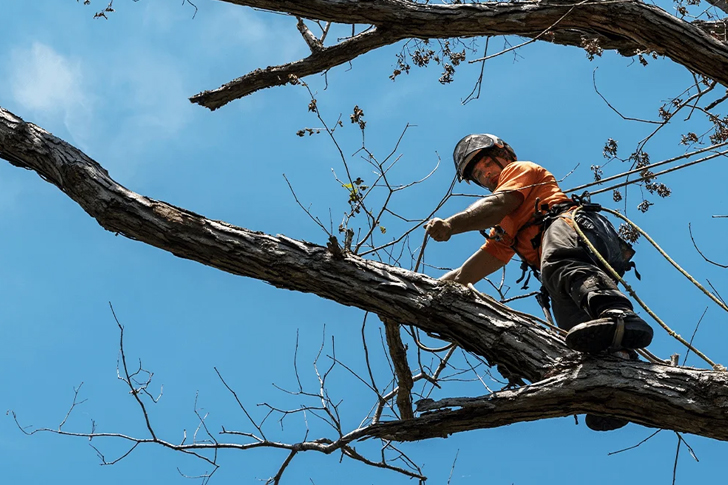A Practical Guide to Tree Removal
Removing a tree, whether due to disease, safety concerns, or landscaping reasons, can be a daunting task. It requires careful planning, the right tools, and often, a comprehensive understanding of local regulations and the environmental impact. This guide will provide you with a detailed breakdown of what tree removal involves, including necessary preparations, estimated costs, and the overall process, aiming to help you navigate this complex task effectively and safely.

Understanding the Need for Tree Removal
Before you consider removing a tree, it’s crucial to identify the legitimate reasons for its removal. Common reasons include disease, storm damage, obstruction, or potential hazards to buildings or pedestrians. However, it’s important to consult with an arborist to explore all possible preservation options. Remember, trees play a significant role in the ecosystem, providing oxygen, improving air quality, conserving water, preserving soil, and supporting wildlife.
Local Laws and Regulations
One of the first steps in the tree removal process is to check the local regulations. Most municipalities have strict guidelines and require permits for tree removal. These regulations can vary significantly depending on your location and the tree’s size, type, and location. Neglecting to follow local laws can result in hefty fines. For example, in some cities, cutting down a heritage tree without permission can lead to fines up to $20,000 or more.
Costs Involved in Tree Removal
The cost of tree removal varies widely depending on several factors including the size of the tree, its location, the complexity of the job, and local labor rates. On average, homeowners can expect to pay between $150 to $2,000, with most spending around $700 to $750. Large projects or those involving multiple trees can escalate to several thousand dollars. Additional costs may also arise if the tree is near power lines, necessitating specialized equipment and safety measures.
Choosing a Professional Tree Removal Service
Due to the inherent risks involved, tree removal typically requires professional expertise. When selecting a tree removal service, it’s essential to choose certified professionals who have experience and carry the appropriate insurance. Look for qualifications such as the International Society of Arboriculture (ISA) certification. Always request multiple quotes and check references to ensure you are hiring a reputable service. Additionally, a good service provider will also handle the permit process and advise on any local regulations you need to be aware of.
Preparing for Tree Removal
Preparation is key to a smooth tree removal process. Clear the area around the tree to prevent any damage to your property or injuries to the crew or bystanders. Inform your neighbors to reduce any potential inconveniences. Additionally, make sure there is adequate access for heavy equipment if needed. During the removal, keep pets and children inside to ensure their safety and clear any vehicles that could be in the way.
The Removal Process
The complexity of the tree removal process depends on the tree’s size, location, and surrounding area. It often involves clearing the area, cutting the tree into manageable sections from the top down, and finally removing the stump. For larger trees, cranes or bucket trucks might be necessary to safely lower large branches. Safety is a paramount concern, and professional services are equipped with the tools, like chainsaws and wood chippers, and techniques to manage the process efficiently.
Environment Considerations and Cleanup
Responsible tree removal involves considering the environmental impact. Whenever possible, wood from the tree should be recycled or used for other purposes like firewood or furniture. Additionally, the removal should strive to minimize impact on surrounding vegetation. After the removal, thorough cleanup is essential to remove debris and restore the area. Most professional services include cleanup as part of their package, but it’s best to confirm this upfront.
Aftercare and Replanting
After a tree is removed, you might want to consider replanting. It is important to choose the right species considering local climate, soil conditions, and available space. When replanting, it’s also beneficial to think about tree species that are native to your area as they often require less maintenance and provide better benefits to the local biodiversity. Consulting an arborist can help you make informed choices that align with your landscaping goals and environmental considerations.
In conclusion, while tree removal can seem overwhelming, proper planning and professional help can facilitate a smooth and safe process. Always weigh the necessity and impact of removing a tree, consider local regulations, and hire qualified professionals. With these factors in mind, tree removal can be conducted efficiently with minimal risk and disruption.







Recent Comments